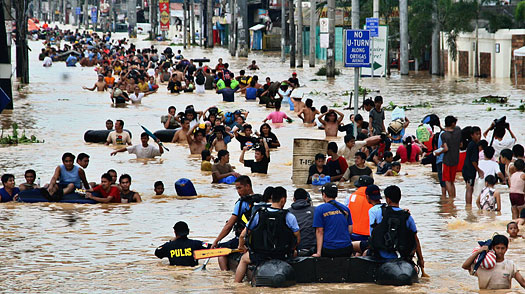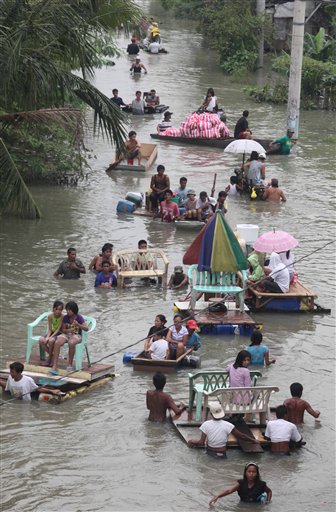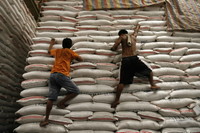This is another picture after typhoon Ketsana hit:

People wade in the chest deep floodwater Sunday, Sept. 27, 2009 in suburban Cainta, east of Manila, Philippines
Source: Time

Residents go on with their normal life amidst floodwaters in Taytay township, Rizal province, east of Manila, Philippines Friday Oct. 2, 2009. Tropical storm Ketsana brought the worst flooding in metropolitan Manila and neighboring provinces in more than 40 years that left more than 250 people dead and dozens more missing. The Philippines is bracing for the super typhoon Parma which is expected to hit the northern part of the country Saturday. (AP Photo/Bullit Marquez)
MANILA, Philippines — Tens of thousands of villagers fled the likely path of a powerful typhoon bearing down Friday on the Philippines, as the government braced for the possibility of a second disaster just days after a storm killed more than 400.
Heavy rain drenched mountainous coastal regions in the northeast as Typhoon Parma tracked ominously toward heavily populated areas still saturated from the worst flooding in 40 years.
Parma was forecast to hit the east coast Saturday, packing sustained winds of up to 120 mph (195 kph) and gusts up to 140 mph (230 kph). Officials fear it may develop into a “super-typhoon,” the government’s weather bureau said.
President Gloria Macapagal Arroyo declared a nationwide “state of calamity” and ordered six provincial governments to evacuate residents from flood- and landslide-prone areas in the path of the storm.
The “state of calamity” extends the one applied to Manila and 25 provinces hit by the earlier storm. The declaration frees up funds to respond to emergencies.
Read morePhilippines ‘state of calamity’: Tens of thousands flee new typhoon

